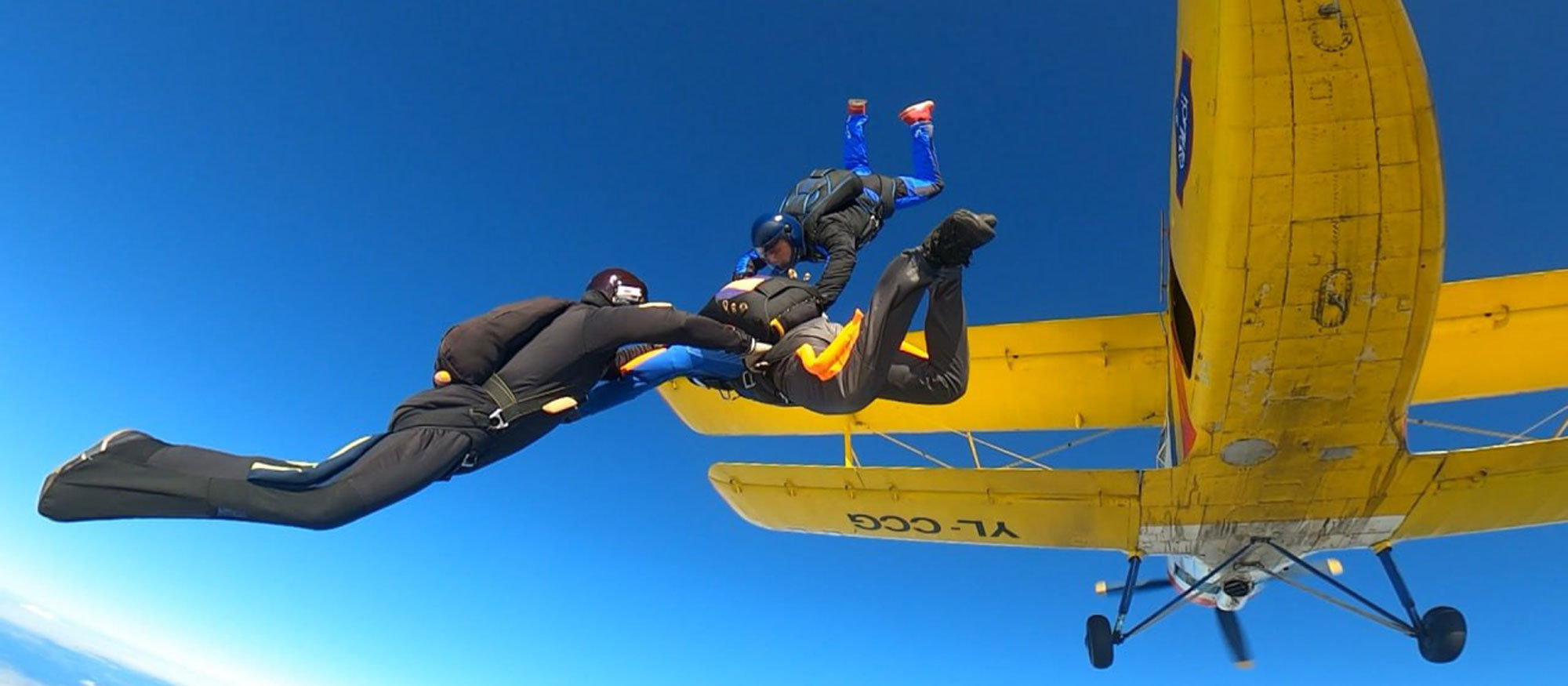AFF Course

What is it?
AFF (Accelerated Free Fall) is an accelerated skydiving training program. It is the fastest and at the same time the safest way to learn how to perform solo jumps. The course is conducted individually for each student and includes both theoretical and practical parts. During the theoretical training, the student receives all the necessary knowledge for a safe jump. The practical part consists of 8 jump levels, each with a specific task. If a student fails to complete the task, the level is not credited and an additional jump is required for skill development.
The first three levels are performed with two instructors who accompany the student, holding them on both sides. The main tasks at these levels are altitude awareness and deploying the parachute independently. After successfully passing these levels, the next jumps are conducted with one instructor. At these stages, students learn to perform maneuvers such as turns and acrobatic elements. The instructor gradually releases the student, staying at a safe distance to stabilize them if necessary and assist with parachute deployment.
Each student’s parachute system is equipped with a special device (AAD) that automatically deploys the reserve parachute in case of unconsciousness or panic. The final level of the course is an exam jump, during which the student must perform a solo jump, demonstrate the acquired skills, and deploy the parachute without assistance. Upon successful completion of the exam, the student receives a license and the right to perform solo jumps.
Required Documents
To enroll in the AFF course, participants must be at least 18 years old and provide the following documents:
- Identification document (passport, driver’s license, or ID card);
- Medical certificate confirming fitness for extreme sports;
- Sports clothing and footwear.
Course Cost
Theoretical training + test — 150.00 EUR
1st jump (two instructors) — 200.00 EUR
2nd jump (two instructors) — 200.00 EUR
3rd jump (two instructors) — 200.00 EUR
4th jump (one instructor) — 150.00 EUR
5th jump (one instructor) — 150.00 EUR
6th jump (one instructor) — 150.00 EUR
7th jump (one instructor) — 150.00 EUR
8th exam jump (one instructor) — 150.00 EUR
* If the student fails a level, the jump must be repeated and paid for again.